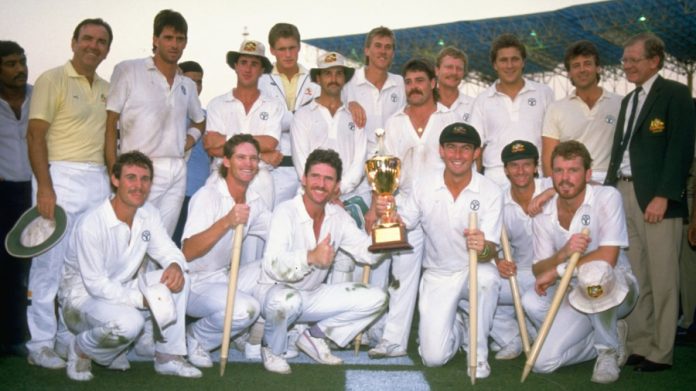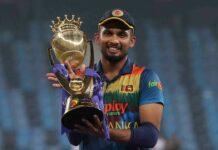The greatest Cricket fiesta on earth has been the stage for staggering individuals who dazzled the passionate fans all around the world. The following article, a part of a sequel, will feature the perennial legends who not only mesmerized the world on the highest level but also branded the event itself.
Glenn Turner (New Zealand)
He is certainly the best, and in fact the most professional New Zealand batsman, in the 70’s era. Leading the team in the inaugural edition in 1975, the punctilious opener went on to become the highest scorer of the tournament. With 333 runs, at an average of 166.5, his highest score came on 7th June when he slammed an unbeaten 171 against East Africa at Birmingham. After his swansong in the 1983 World Cup, his career runs stood at 612 in 14 World Cup innings at an average of 61.20.
Gordon Greenidge (West Indies)
Opening the calamitous West Indies offensive with Roy Federicks in 1975, he soon followed the vigorous opening combinations with Desmond Haynes four years later. Greenidge opened the 1979 campaign with a ton in a 9-wicket win against India which included a 138-run stand with Haynes. In the semi-final, he devised 73 runs in a 132-run stand. With 253 runs (avg. 84.33), Greenidge became the highest run scorer in the tournament. In 1983, he recorded the highest partnership (195*) of the tournament with Larry Gomes against Zimbabwe. His willow produced 250 runs in 1983, accumulating 591 World Cup runs at an average of 45.46.
David Boon (Australia)
Along with his stout figure and distinctive moustache, the celebrated son from Tasmania made his World Cup debut under Alan Border in 1987. Opening with Geoff Marsh at the other end, his 447 runs (avg. 55.87) included 5 fifties which became a vital contribution to their triumph. In the semi-final, his 65 runs was the top score when Australia made 267/8 against Pakistan and so was his stoical 75 in the final which formed the backbone in a stunning 7-run victory against England. He was named man of the match in the 1987 finals. Not long after his booze binge on the flight to England in the 1989 Ashes series, he returned to the 1992 World Cup, scoring a century in the opening game against New Zealand. With 2 centuries and 5 fifties in 16 matches, Boon has made 815 runs at an average of 54.33, making him one of the stand-out individuals in the early World Cup era.
Vivian Richards (West Indies)
A place for ‘King Viv’ in a legends line-up is a mere cakewalk. The explosive batsman from Antigua was capable of causing colossal damage to any bowling battalion stamped upon him. Viv’s performance on the big stage however came into spotlight as a fielder, when he caused three run-outs in the 1975 finals. His illustrious World Cup career as an aggressive stroke player sparked into life when he came into bat in the 1979 finals when they were struggling at 99/4. Along with a 139-run stand with Collis King, Viv made an unbeaten 138 which proved crucial in their eventual victory. He scored 217 runs in the 1979 event at an average of 108.5. Adding 132 runs with Larry Gomes, his 80 runs in the semi-final against Pakistan secured their place in a successive final. He scored 367 runs in 1983 before managing a further 391 runs in 1987 which included a 181-run pummeling against Sri Lanka at Karachi. With 3 centuries and 5 half tons, Richards has scored 1013 runs in the World Cup, also holding the record for the highest average (63.31) considering the minimum of 20 innings.
Clive Lloyd (West Indies) – Captain
Facts and figures aside, he was perhaps the most dominant personality in the early days of the big event. The 6’5” lanky frame with broad glasses, led the destructive Caribbean Clan into three finals. As the supreme leader of the West Indian leviathan in the 1970’s, the two-time World Cup winning captain was himself an authoritative figure on the field. His century in the inaugural final in 1975 spearheaded their last step en route to the title. As a safe fielder, Lloyd secured 5 catches during his last World Cup in 1983, before scoring 393 runs in 11 innings.
Graham Gooch (England)
He was considered as the most prolific run scorer for England but was also one of the most unfortunate players to carry their World Cup tales. Playing in 3 finals, Gooch ended up on the losing side all three times overshadowing his 897 runs (avg. 44.85) that were compiled in 21 games. At an average of 52.5, he scored 210 runs in the 1979 edition. He missed the 1983 event but came back to become the highest scorer in the 1987 tournament with 471 runs in 8 matches (avg. 58.87) which included an arduous 115 against India in the semi-finals.
Imran Khan (Pakistan)
No one would forget the charismatic captain who led his young army to victory in 1992 after being “rock bottom in morale” at the beginning of the campaign. Making his debut in 1975, he captured 5 wickets before repeating the same feat in 1979. With his bat, he produced 283 runs in 1983 at an average of 70.75 which included an unbeaten ton against Sri Lanka at Leeds. His all-round skills spoke for itself when he secured 4 catches in the same tournament. Behind Craig McDermott, he became the second highest wicket taker in the 1987 World Cup with 17 scalps (avg. 13.05) with a startling strike rate of 17.5. His 666 World Cup runs were backed by his 34 wickets, at an average of 19.26, only second to McGrath highlighting his terrific all-round prowess.
At the twilight of his career, the 39-year old veteran led Pakistan to their only victory in 1992. During his swansong at MCG, Imran Khan pledged the proceedings of his triumph to build a cancer hospital in memory of his late mother before raising the ‘Benson & Hedges’ trophy to the Melbourne night sky.
Kapil Dev (India)
Kapil Dev and his team defied the odds, causing perhaps the greatest upset in World Cup history. During his span, Kapil Dev scored 669 runs with the all-time highest World Cup strike rate of 115.14 (minimum of 20 innings). Against Zimbabwe in 1983, he came in at 17/5 before battering 175 off 138 balls. When the final was hanging in the balance, his excellent catch dismissed Vivian Richards to turn the game. Dev’s victorious summer featured 303 runs (avg. 60.6), 12 wickets (avg. 20.41, Econ 2.91) and 7 catches and notwithstanding his staunch leadership to beat the mighty Windies. Later in 1987, the lavish all-rounder scored 152 runs (avg. 50.66), taking 5 more catches.
Rod Marsh (Australia) – Wicketkeeper
Would a vintage all-star line-up be complete without the gloves of Rodney Marsh? Setting the standard for keepers in his era, Marsh was one of the greatest. With 355 test dismissals, amazingly he made just two appearances but never ceased to amaze the big stage. His acrobatic dives and glovemanship earned him the respect and admiration of ardent fans. In 1975, Marsh made 10 dismissals (9 catches, 1 stumping) in 5 games, most in the tournament. In 1979 along with many other Australian stars, Marsh missed the World Cup allowing his contemporaries to better their numbers. But he returned in 1983 to grab 8 dismissals, taking his tally to 18 World Cup dismissals in 11 innings with an impressive average of 1.636 dismissals per game. Marsh also came in handy with the bat, scoring 142 runs in 6 matches in his last World Cup in 1983.
Javed Miandad (Pakistan)
The first player to appear in 6 World Cups, Javed Miandad made his journey to England as a 17 year old in 1975. Miandad’s 1083 World Cup runs came in 30 innings at an average of 43.32. With age, he matured as the 1983 tournament saw Miandad scoring 220 runs in 6 matches. In 1987, he opened the World Cup with a century against Sri Lanka before scoring a hard-fought 70 in the semi-finals. His 274 runs in 1987 was followed by 437 runs (avg. 62.42) when his title ambitions finally became a reality in 1992. Miandad played a key role when he partnered with skipper Imran Khan in a 139-run partnership as he made a salient 58 in the finals.
Andy Roberts (West Indies)
He was the standout in the vicious bowling artillery which featured the likes of Bernard Julien, Keith Boyce, Joel garner and Michael Holding. Only 22 yards separated the prey from the fierce paceman who became a living nightmare for any batsman. He shattered the line-ups, claiming 8 wickets in 1975, followed by 7 (avg. 21.28) and 11 scalps (avg. 21.63, econ 3.21) in 1979 and 1983 respectively. Roberts’ total of 26 wickets in 16 matches came at an average of 21.23 while he also carries the best economy rate in tournament history with 3.24 runs per over. His opening salvos with lightning pace would be a delightful treat for any star line-up.
Abdul Qadir (Pakistan)
Amongst the finest spinners Pakistan has produced, Abdul Qadir’s wrist spin stands tall. A stalwart who nurtured the proponents of crafty leg spin, was a ‘master’ in perfection. His exceptional googlies, flippers and top-spins beard the potential to damage any strong line-up in which he did so during his short World Cup stint. Qadir made his ODI debut against New Zealand at Birmingham in the 1983 World Cup capturing 4 for 21 in 12 overs. Against Sri Lanka at Leeds, he teamed up with wicketkeeper Wasim Bari to dismantle the middle order, claiming 5 for 44 before he amassed a total of 12 wickets for the tournament. In 1987, he took a further 12 wickets (avg. 20.16) in 5 matches with an imposing economy rate of 3.55 runs per over which included a quality spell of 4 for 31 against England at Rawalpindi. In his brief career, his 24 World Cup wickets came in 13 innings. Although it was a short stay at the pinnacle, Qadir’s mastery surely earns him his place as one of the best spinners to grace the occasion in its early days of flourish.






















